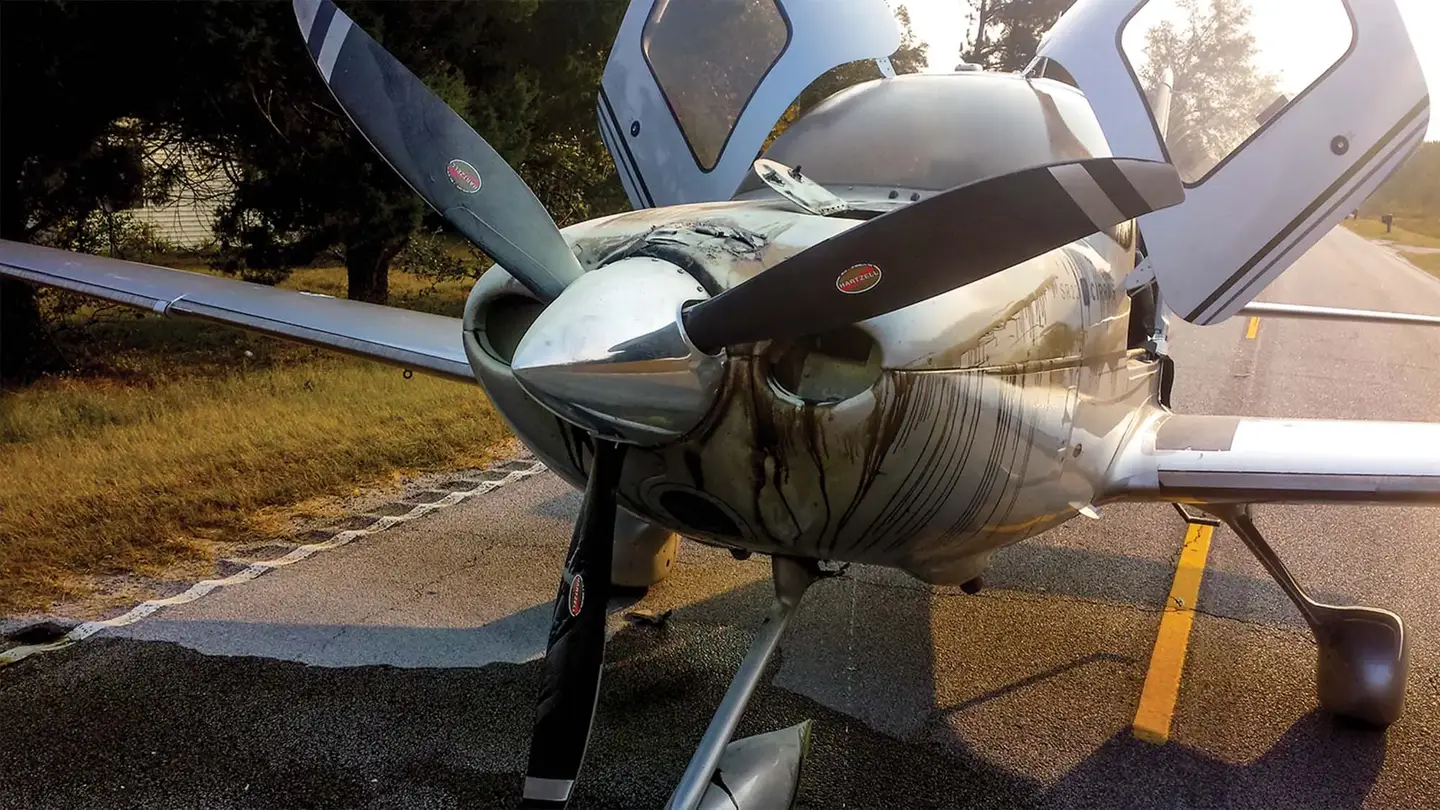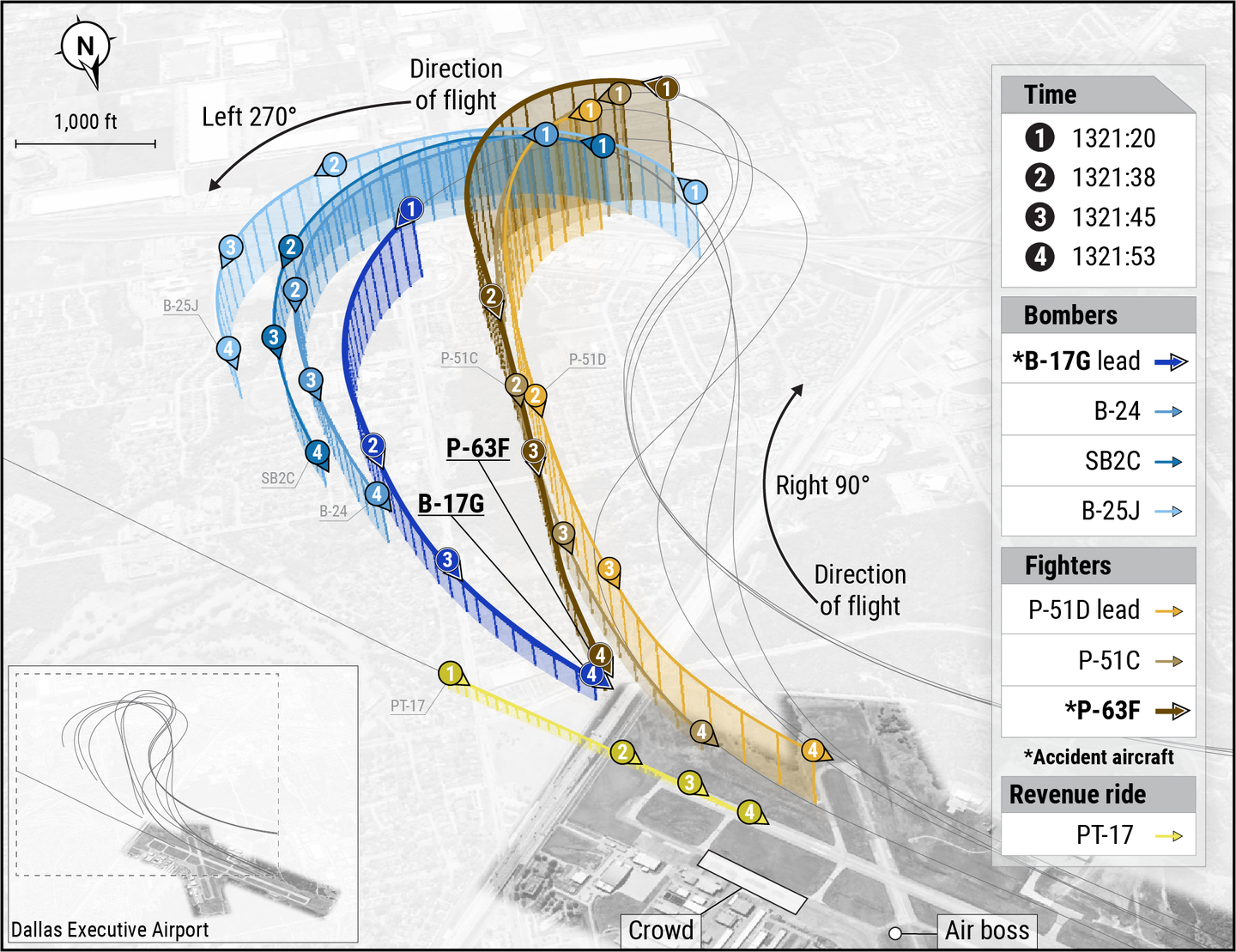General Aviation Accident Bulletin
AVweb’s General Aviation Accident Bulletin is taken from the pages of our sister publication, Aviation Safety magazine. All the reports listed here are preliminary and include only initial factual findings…

Aviation Safety Accident Bulletin
AVweb's General Aviation Accident Bulletin is taken from the pages of our sister publication, Aviation Safety magazine. All the reports listed here are preliminary and include only initial factual findings about crashes. You can learn more about the final probable cause on the NTSB's website at www.ntsb.gov. Final reports appear about a year after the accident, although some take longer. Find out more about Aviation Safety at www.aviationsafetymagazine.com.
January 12, 2020, Fairbanks, Alaska
Piper PA-31-350 Navajo Chieftain
The airplane sustained substantial damage at about 1223 Alaska time when it was intentionally landed with the right main landing gear retracted. The airline transport pilot, six passengers and a lap infant were uninjured. Visual conditions prevailed for the FAR Part 135 scheduled commuter flight.
As the flight approached its destination, attempts to extend the landing gear were unsuccessful. The pilot performed the emergency landing gear extension procedures, including a check of circuit breakers and hand-pumping the system, but the landing gear did not extend. She diverted back to the departure airport, where emergency services and a maintenance crew were available. Nearing the airport, the pilot activated the emergency blowdown pneumatic system for both the main and nose landing gear. The green landing lights for the nose and left main landing gear illuminated, but the right main landing gear light did not indicate down. Tower controllers reported the right main landing gear door was open, but the gear remained retracted. The pilot then flew to a nearby training area, climbed to 5000 feet and attempted to swing the right main landing gear out with high-G maneuvers, but was unsuccessful.
The pilot performed a straight-in visual approach. Once the landing was assured, she feathered and secured both engines. During the landing roll, the right wing impacted the runway, resulting in substantial damage to the right wing and aileron. All occupants evacuated normally.
Investigation revealed the hydraulic reservoir was depleted, and minimal fluid was present. After servicing, a leak was observed at a fitting in the right main landing gear system. Also, a shuttle valve in the right main landing gear’s pneumatic blowdown system was inoperative. The shuttle valve was disassembled, and water and corrosion were present inside.
January 15, 2020, Roy, Utah
Cessna T310
At about 1511 Mountain time, the airplane impacted terrain while on approach to land. The solo commercial pilot was fatally injured and the airplane was substantially damaged. Visual conditions prevailed.
When the pilot reported two miles out, ATC cleared the flight to land on Runway 35. Up to this point, communication between the pilot and ATC had been normal. The controller used binoculars to verify the airplane’s landing gear was down for the landing and saw the airplane initiate a steep left banking turn, followed by a steep bank to the right while losing altitude, after which the controller lost sight of the airplane.
Several witnesses noticed how slow the airplane seemed to be. Another witness described the airplane’s sound as “popping,” and thought the pilot was trying to restart one of the engines. The landing gear and the flaps were extended, and he saw that the airplane was “crabbing” to the left and seemed to be struggling to stay airborne.
January 16, 2020, Dutch Harbor, Alaska
Beech B200 Super King Air
The airplane sustained substantial damage when it impacted the Bering Sea at about 0806 Alaska time, while taking off. Night visual conditions prevailed for the FAR Part 135 air ambulance flight, and an IFR flight plan had been filed. The airline transport pilot sustained minor injuries while the flight paramedic and flight nurse were uninjured.
After completing the before-takeoff checklist, the pilot back-taxied to depart on Runway 31 and initiated the takeoff roll. At midfield, airspeed was 75 KIAS and increasing. When the airplane reached about 90 KIAS, he lifted off and noted a brief positive rate of climb, followed by a sinking sensation. The airspeed rapidly decayed, and the stall warning horn sounded. As he lowered the nose to regain airspeed, the pilot immediately noticed the airplane’s lights reflecting off the surface of the water. He pulled back on the yoke and leveled the wings just before impacting the ocean.
Subsequently, the pilot recalled the ASOS-reported winds were from 100 degrees at nine knots. However, the 0757 ASOS observation included winds from 110 degrees at 20 knots, gusting to 28 knots. The airport’s IFR takeoff minimums and obstacle departure procedures only allow night departures from Runway 31.
January 28, 2020, Springfield, Ill.
Piper PA-60-601P Aerostar
At about 1503 Central time, the airplane collided with terrain while conducting an ILS approach. The airline transport pilot, two passengers and a dog were fatally injured. The airplane was destroyed during a post-impact fire. Instrument conditions prevailed and the flight operated on an IFR flight plan.
At 1449:00 and after being advised of reported icing on the approach, ATC cleared the flight for the ILS to Runway 31. Shortly afterward, the pilot reported he was not receiving the ILS signals. After some back and forth with ATC, the pilot realized he had entered the wrong frequency. By 1450:40, the pilot confirmed he was receiving the localizer and the glideslope as he flew through the approach centerline at 3000 feet MSL outside the final approach fix.
At 1451:25, after the flight switched to the tower, ATC advised the airplane appeared to be “slightly left of course.” By 1451:46, the airplane was at 2400 feet MSL and had flown through the localizer to its right side. Ten seconds later, ATC cancelled the approach clearance and directed the flight to climb back to 3000 feet and turn to a 360-degree heading. The controller told the pilot, “...it just didn’t look safe from here so contact departure...” and provided vectors for a second attempt at the Runway 31 ILS.
At 1454:11, the approach controller asked the pilot, “Are you having some issues with your nav head?” The pilot replied with a single word, “Yup.” At 1454:39, the pilot transmitted, “...and, ah, we’re picking up a little ice.” At 1458:09, after providing vectors for another attempt at the ILS, the controller verified with the pilot that he was picking up the localizer. At 1500:09, ATC again cleared the flight for the ILS to Runway 31. By 1502:11, the approach controller told the pilot to contact the tower. The airplane was about 3.5 miles from the final approach fix, paralleling the localizer slightly left of its centerline.
About five seconds after the pilot had been cleared to contact the tower, the airplane entered a left descending turn away from the localizer to a south-southwest course. At 1502:47, the pilot told ATC, “We’ve got a prob (unintelligible).” At 1502:49, the tower controller asked the pilot if he was able to climb. There was no recorded response from the pilot. The left turn began at 2400 feet MSL and descended to 700 ft MSL before ADS-B track data was lost at 1503:11. The final ADS-B datapoint was recorded at about 125 feet AGL, about 362 feet east-northeast of the airplane’s initial impact with terrain.
The attitude indicator and horizontal situation indicator were extensively damaged in a post-crash fire. Their internal gyros did not exhibit any evidence of rotational scoring, nor did the turn indicator gyro.
This article originally appeared in the April 2020 issue of Aviation Safety magazine.
For more great content like this, subscribe to Aviation Safety!






